Kazakhstan is a vast country, more than 11 times the size of the United Kingdom, with fascinations to be found everywhere. But what are the country’s real treasures?
Almaty, the former capital
The largest and most cosmopolitan city in the country, in a beautiful setting at the foot of the Tian Shan Mountains, Almaty has the best range of places to eat and the most vibrant nightlife in Kazakhstan.
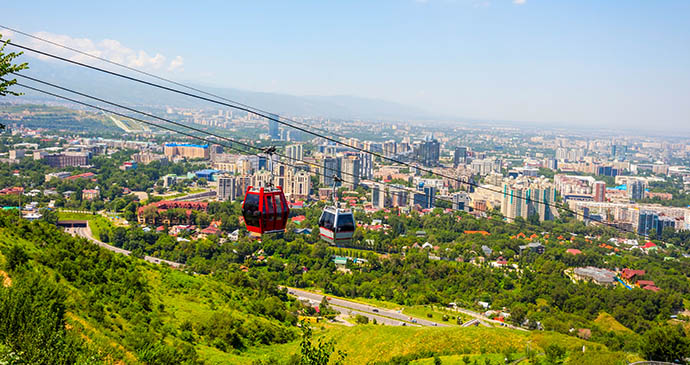
It makes an excellent base for exploring the attractions of the wider region, but also has plenty of sights in itself, including a wealth of fascinating museums and unusual buildings that offer insights into the city’s richly varied past.
Bizarre architecture
Astana, Kazakhstan’s current capital, has grown a lot over the past couple of decades. Increasingly audacious and unconventional architecture and monuments have been springing up across the city, giving it a dynamic and modern air.
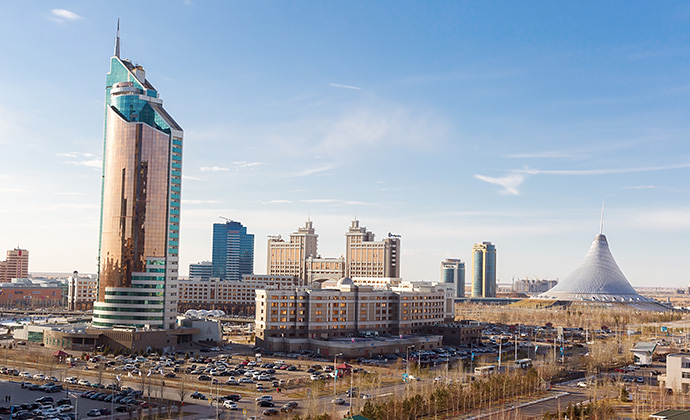
World-renowned architects have been enlisted to help build the city: its general plan was designed by Japanese architect Kisho Kurokawa, while some of its most eye-catching buildings were the products of British architect Norman Foster, the man behind many of the world’s most iconic buildings.
Silk Road treasures
A northern branch of the Silk Route ran for centuries across southern Kazakhstan, with the modern-day towns of Turkestan, Sayram and Taraz all prominent settlements.
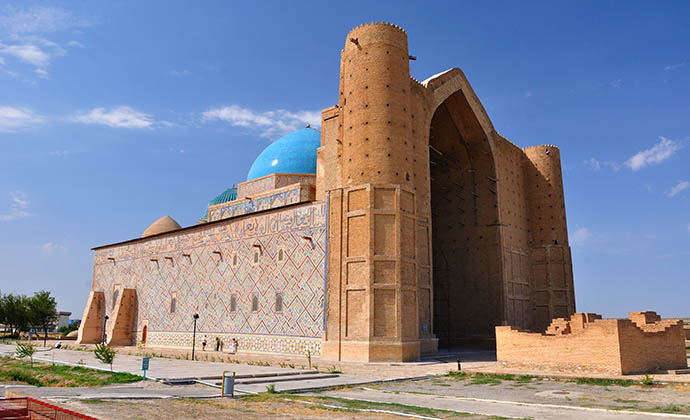
The architectural legacy of the civilisations that controlled this route includes some of the most beautiful buildings in the region, such as the carved terracotta tilework of the Karakhanid Mausoleum of Aisha Bibi outside Taraz and, above all, the Timurid Mausoleum of Khoja Ahmed Yassaui in Turkestan.
Vast landscapes
Like love, steppe is all around, at least across vast swathes of Kazakhstan, but it is such a central part of the national identity that you should ensure your programme includes some exposure to this great expanse of grassland, from where you will take memories of the scent of wormwood and circling flights of the steppe eagle.
Places to head for include the lakes around Korgalzhyn, with their colony of pink flamingos, the Mausoleum of Abai and Shakarim near Semey, and one of the attractive areas of wooded granite hills, which stand as ‘islands’ in the steppe. Of these, Borovoye north of Astana is being heavily marketed as a tourist destination. Karkaraly, east of Karaganda, is a quieter and more authentic alternative.
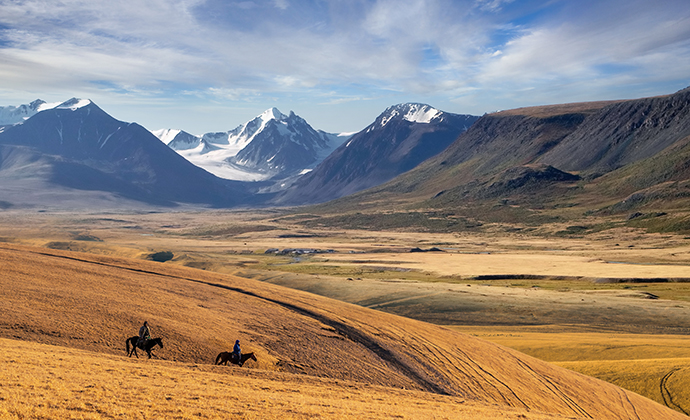
Rising from deciduous woodland packed with wild fruit trees, through pine, cedar or spruce forest, to upland meadows and then peaks fringed with glaciers, the mountain ranges on the southern and eastern borders of the country are great environments in which to trek, ride or simply just be.
You can be up in the hills in a matter of minutes from the centre of Almaty, and truly beautiful spots such as the Big Almaty Lake are an easy day trip. For mountaineers, Khan Tengri, the beautiful pyramid-shaped peak that marks the highest point in Kazakhstan, offers an irresistible lure.
The world’s largest cosmodrome
Securing the necessary permissions to come to Baikonur Cosmodrome is time-consuming, but it is worth the effort. It is a fascinating living museum of the history of space exploration, being the place from which both Yuri Gagarin, the first human in space, and the first artificial satellite set off on their historic journeys.
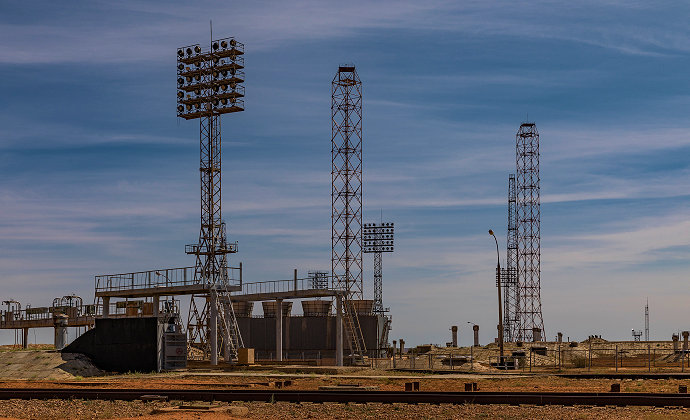
A visit here is an expensive but unforgettable one, especially if you can manage to get your trip to coincide with a launch!
A chance to experience nomadic life
There remains section of Kazakhstan’s population that lives as pastoralists, moving their animals seasonally. And, whilst their number is nowadays greatly diminished, the traditions and artefacts of nomadism nonetheless lie at the heart of Kazakh culture.
The yurt, hunting with eagles, and beshbarmak (a traditional nomad dish of finely chopped boiled meat) are invoked frequently in the symbolism of the post-independence state, whether by government sources or advertisements on television.
Epic poetry, recounted by akyns (improvising poets and singers) and accompanied by dombra playing, remains popular, and some young Kazakh pop bands are experimenting with the use of traditional Kazakh instruments and musical styles alongside Western ones. Horsemeat remains a revered part of the Kazakh diet, even if the urban elite has also developed a decided fondness for sushi.
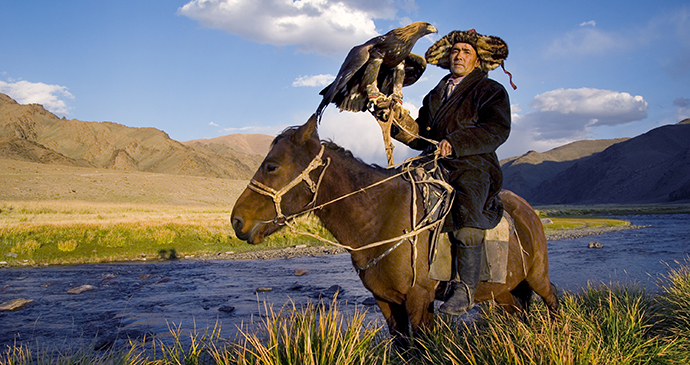
Following independence, there has been an attempt by the authorities to further promote Kazakh cultural traditions, though with some awareness of the need to also balance this with the cultures of the other ethnic groups present in Kazakhstan. Traditional horse-based sports are a good example, where at race tracks across the country you may find, especially on public holidays, performances of some of the games dating back to Kazakh nomadism alongside Western-style horse races.
One of the most popular is kokpar, whose rules are basically about horsemen grabbing the carcass of a headless goat and scoring a goal with it. The rules of the game have, however, been modernised: there is even a federation governing the sport. Rather than the scrums of old, there is a marked pitch and four players from each side are on the field at any one time.
Unlike kokpar, kyz kuu (‘catch the girl’) is regarded more as a piece of fun than serious sport: on the outward leg of this two-horse race, whose participants usually wear traditional Kazakh costumes, boy chases girl, aiming to kiss her if he catches her. On the return journey girl chases boy, her objective being to give him a good thrashing with her horse whip. Another horse-based sport enjoying a revival is alaman baiga, a long-distance horse race, which originated with the need of the nomadic Kazakhs to promote endurance in horses. The jockeys are by tradition small boys.
More information on Kazakhstan
Inspired to visit Kazakhstan? Check out our guide for more information: